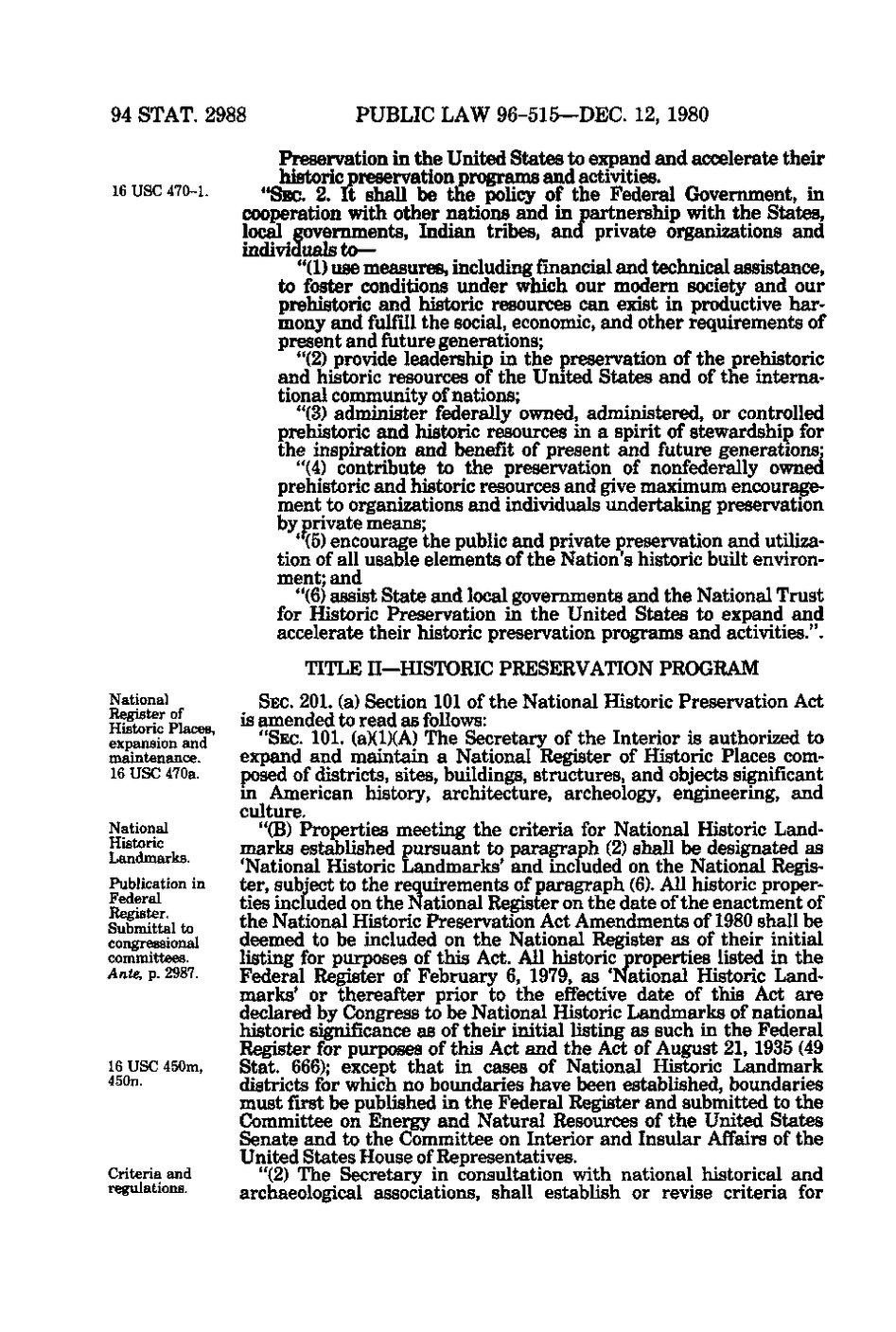- Preservation in the United States to expand and accelerate their historic preservation programs and activities.
“Sec. 2.16 USC 470-1. It shall be the policy of the Federal Government, in cooperation with other nations and in partnership with the States, local governments, Indian tribes, and private organizations and individuals to—
- “(1) use measures, including financial and technical assistance, to foster conditions under which our modern society and our prehistoric and historic resources can exist in productive harmony and fulfill the social, economic, and other requirements of present and future generations;
- “(2) provide leadership in the preservation of the prehistoric and historic resources of the United States and of the international community of nations;
- “(3) administer federally owned, administered, or controlled prehistoric and historic resources in a spirit of stewardship for the inspiration and benefit of present and future generations;
- “(4) contribute to the preservation of nonfederally owned prehistoric and historic resources and give maximum encouragement to organizations and individuals undertaking preservation by private means;
- “(5) encourage the public and private preservation and utilization of all usable elements of the Nation’s historic built environment; and
- “(6) assist State and local governments and the National Trust for Historic Preservation in the United States to expand and accelerate their historic preservation programs and activities.”.
TITLE II—HISTORIC PRESERVATION PROGRAM
Sec. 201.National Register of Historic Places, expansion and maintenance.
16 USC 470a. (a) Section 101 of the National Historic Preservation Act is amended to read as follows:
“Sec. 101. (a)(1)(A) The Secretary of the Interior is authorized to expand and maintain a National Register of Historic Places composed of districts, sites, buildings, structures, and objects significant in American history, architecture, archeology, engineering, and culture.
“(B)National Historic Landmarks. Properties meeting the criteria for National Historic Landmarks established pursuant to paragraph (2) shall be designated as ‘National Historic Landmarks’ and included on the National Register, subject to the requirements of paragraph (6). Publication in Federal Register. Submittal to congressional committees.
Ante, p. 2987.All historic properties included on the National Register on the date of the enactment of the National Historic Preservation Act Amendments of 1980 shall be deemed to be included on the National Register as of their initial listing for purposes of this Act. All historic properties listed in the Federal Register of February 6, 1979, as ‘National Historic Landmarks’ or thereafter prior to the effective date of this Act are declared by Congress to be National Historic Landmarks of national historic significance as of their initial listing as such in the Federal Register for purposes of this Act and the Act of August 21, 1935 (49 Stat. 666)16 USC 450m, 450n.; except that in cases of National Historic Landmark districts for which no boundaries have been established, boundaries must first be published in the Federal Register and submitted to the Committee on Energy and Natural Resources of the United States Senate and to the Committee on Interior and Insular Affairs of the United States House of Representatives.
